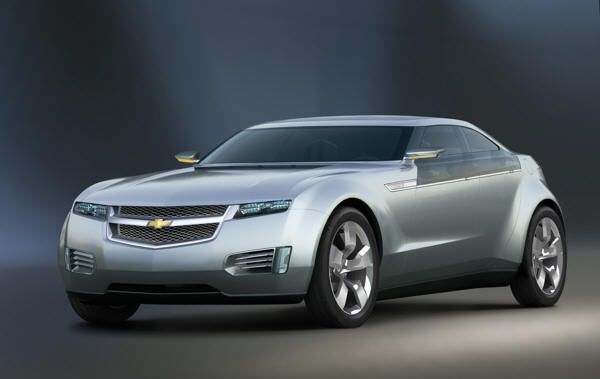Here’s what’s causing concern about the Volt.
They’re missing targets. Right now, it’s the price target. GM is saying that they’d rather miss the price target than miss the targeted introduction date.
The car originally was targeted for 2010 at a price of $30,000.
Although GM apparently remains committed to introducing the Chevrolet Volt in 2010, they’re not committed to the price, any more.
They’re expecting it to be closer to $35,000.
Why?
It’s the audio system, the windshield wipers, the power accessories.
(more after the jump)
According to GM insiders, the problem is that these accessories all draw power from the battery. That battery, however, is the source of electricity to drive the wheels and move the car. The accessories are power hogs, which would substantially reduce the car’s forty mile range on battery power alone.
The fix, according to Wired.com, is something called “redundant systems,” which sounds like GM will be adding a back-up generator for the power accessories.
According to Dee Allen of General Motors, speaking to Wired.com, “ou really start taking away from the range when you’re using ten speaker audio systems, wipers. These systems need to be redone, and they are being redone.”
“Redone.”
That is a word that means something was done at least once before, and is now being done over, presumably because it wasn’t done well enough the first time.
The Volt is one big question mark, and not just because the batteries upon which it depends are still in the experimental stage.
The Volt will have entirely new levels of complexity, of types far different than those associated with typical cars that run on internal combustion engines and use normal automatic transmissions. Customers, however, are going to be expecting both the reliability that is now taken for granted in even the least expensive vehicles and the comfort and luxury that is demanded by anyone buying a $35,000 car. Novelty and a desire to seem “politically correct” may sell the Prius. But, for the extra $15,000, Chevrolet’s going to have to produce a car that actually performs as well as other cars in that price range.
And it is going to have to do it with the same level of reliability – and under the same conditions, be they Wisconsin’s deep freeze winters or Arizona’s baking heat.
At the North American International Auto Show in Detroit last month, a group including TopSpeed.com was able to spent some quality interview time with Jamie Hresko, the “vice president, quality” at General Motors. Hresko is an engineer. Engineers have a certain way of approaching problems that is different than the way the rest of us do it. Engineers don’t really see a problem. They just see an opportunity to find solutions, and then to select from them the best solution.
Hresko described the corporate commitment to quality, one that includes changing the design life of components and testing, testing, testing – testing components to failure, just to be sure that they won’t fail for the customer.
Nothing in the Volt program is suggesting, to me at least, that General Motors has the time or intention of doing this level of testing before introducing the Volt.
GM’s reputation will not be enhanced if it is the customers who end up doing the testing.

